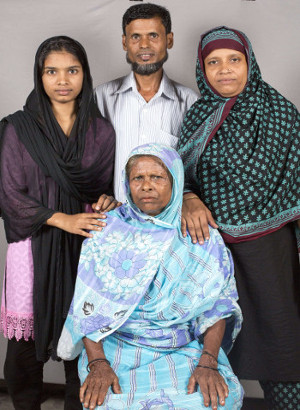Why are we doing this?

Tanti’s (weaver's) family, our true heroes
‘Our original goals were simply to record and capture the history of this fabled fabric. These objectives evolved over time to capturing muslin’s contribution to our culture, inspiring its revival, bringing recognition to the artesans who had made us so famous and exploring its potential for the future’ said Saiful Islam, MD, Bengal Muslin. The seeds of the muslin project were sown when the Stepney Community Trust, based in East London, approached Saiful Islam in 2013 about holding a show on muslin in Dhaka.
Saiful Islam and his colleagues at Drik were immediately struck by the idea and resolved to carry out more extensive research into what they believed would be a truly remarkable project for Bangladesh. They received a hugely positive response from many of the external researchers, academics, designers, craftspeople and Government officials that they contacted.
Drik-Bengal Muslin considered that it was vital and urgent to explore and support Bangladesh’s crafts while at the same time ensuring that the past retained a sustainable and significant role in the country’s cultural and economic landscape. The present jamdani industry is under commercial pressure and increasingly moving towards cheaper and coarser varieties. Arresting this decline is vital for the on of the industry.
While muslin would never again be produced in significant volumes, it could nevertheless act as a ‘role model’ for handloom textiles.
The first stage of the project, i.e. the Muslin Festival in 2016, was backed by Drik and also funded by Aarong (the non-profit development and craft agency of BRAC) and the Ministry of Culture, Government of Bangladesh.
Since then, the Bengal Muslin project has been self-funded. ‘This is not simply a fabric and a project; it’s about our collective identity and national heritage’ said Saiful Islam. ‘In the end it’s rewarding to revive the past for our future generations’.


